Abstract
1. Antidiuretic hormone (ADH) was infused into normal male rats at a rate of 60 μu./min. 100 g body wt., to maintain an effectively constant maximal circulating level. Four groups of rats were used; they were water-loaded by receiving together with the ADH, I.V. infusions of hypotonic dextrose (2·5 g/100 ml.) at different rates (1·0, 4·5, 9·0 and 12 ml./hr, respectively), over an infusion period of 4 hr.
2. Urine flow rate increased in all groups, the rate and extent of the increase being related to the volume rate of infusion. The differences in urine flow rates between the four groups were due almost entirely to increases in free water clearance, with no consistent differences in osmolal clearance between the groups. At the end of the 4 hr infusion period, osmolal clearances were closely similar in the four groups.
3. Papillary and medullary tissue solute concentrations were progressively reduced at the higher rates of infusion. The changes were due to small increases in the water content, together with a profound decrease in urea concentration and a smaller decrease in sodium concentration. However, papillary osmolality was consistently higher than urine osmolality at the three highest rates of dextrose infusion.
4. As urine flow rate increased, there was a progressive reduction in the degree of osmotic equilibration between the final urine and the papillary tip. For urea, however, the degree of equilibration remained high.
5. It is concluded that, in the rat, the rate of flow per se, along the collecting duct, is an important determinant of final urine concentration; even if there is an osmotic driving force for water re-absorption in the renal medulla, and the collecting duct walls are permeable to water, osmotic equilibration is restricted by tubular flow rate.
Full text
PDF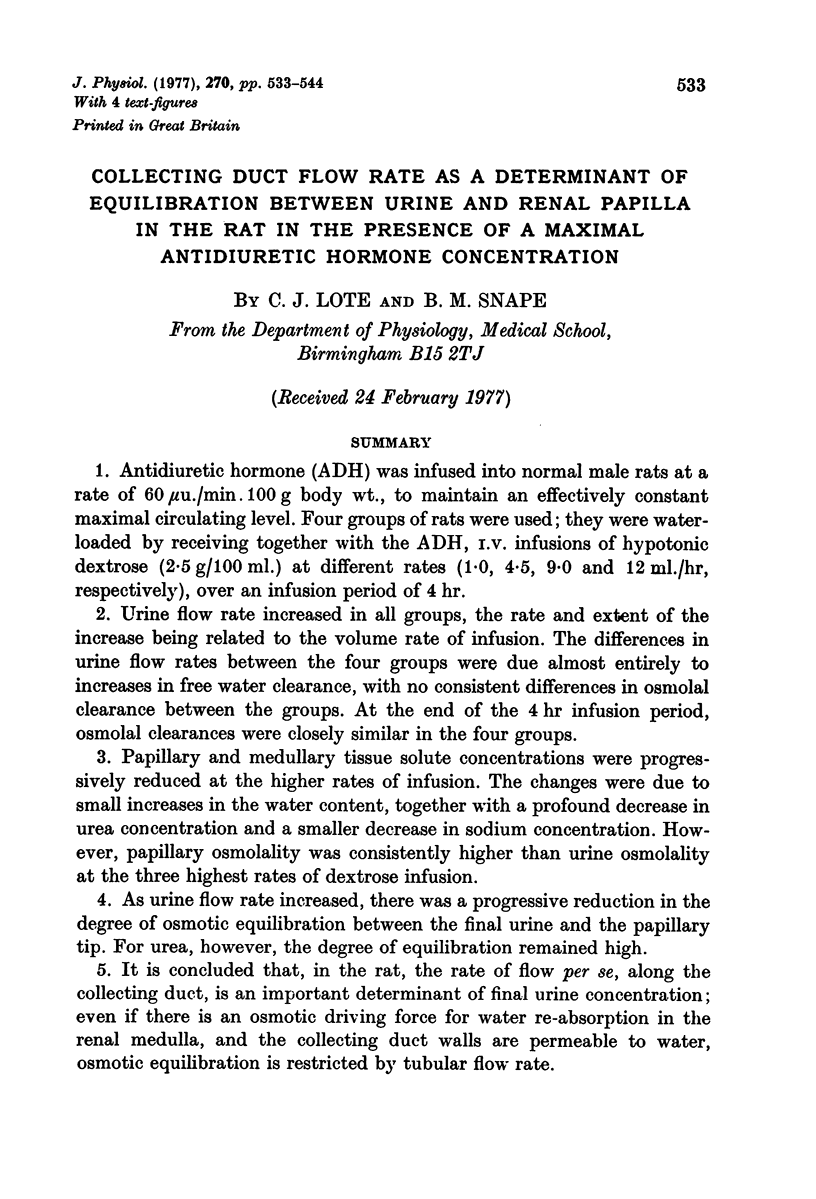
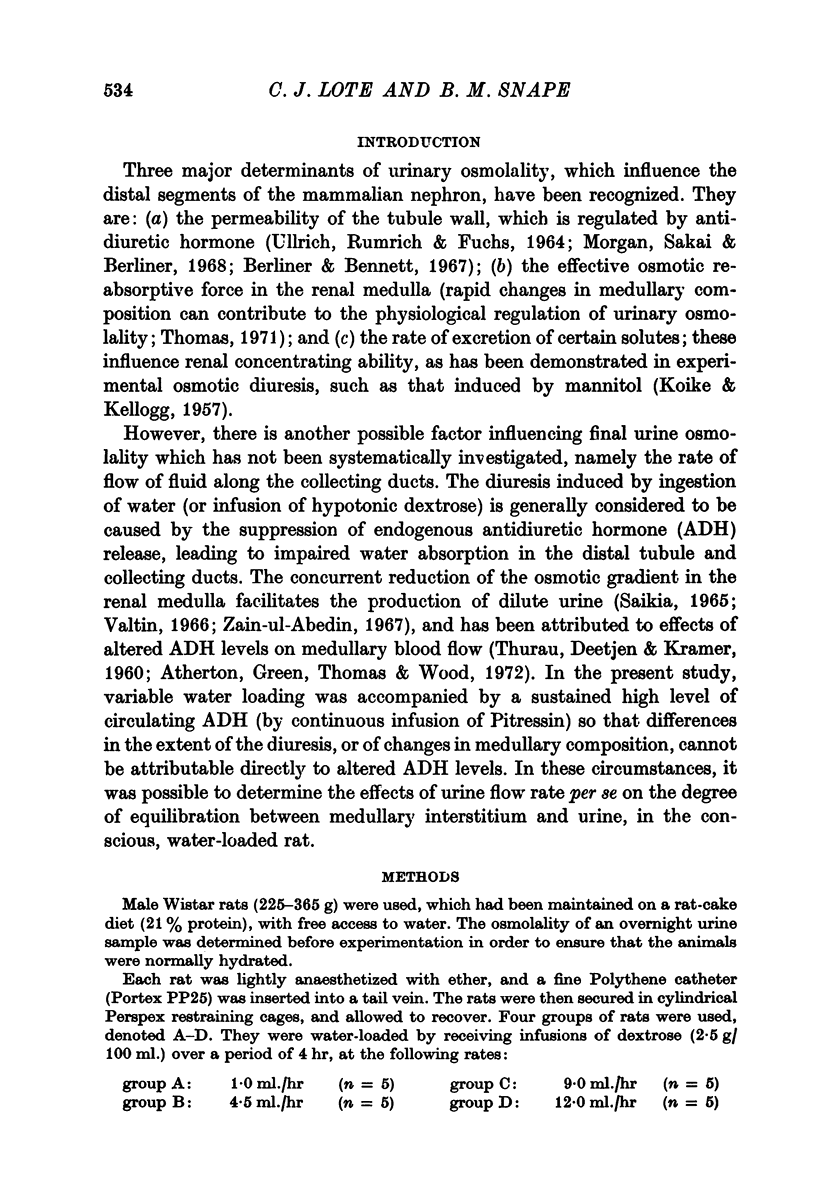

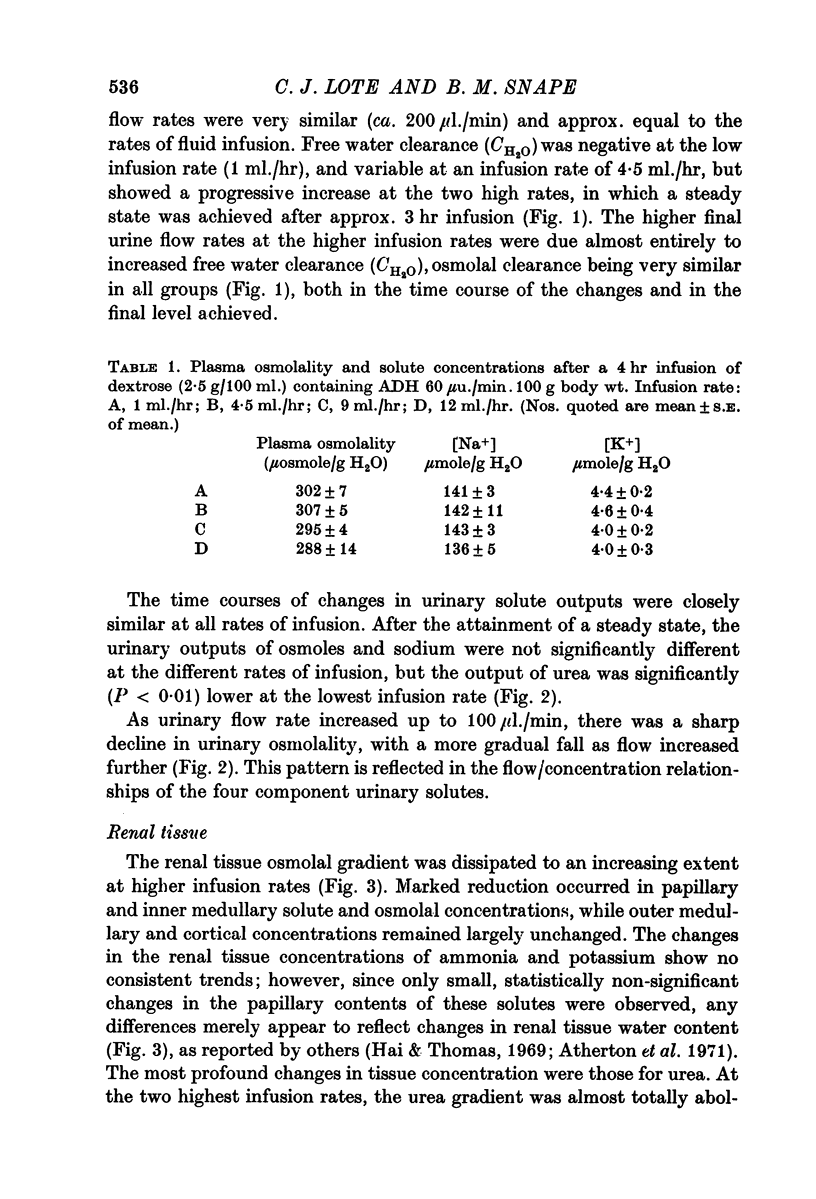
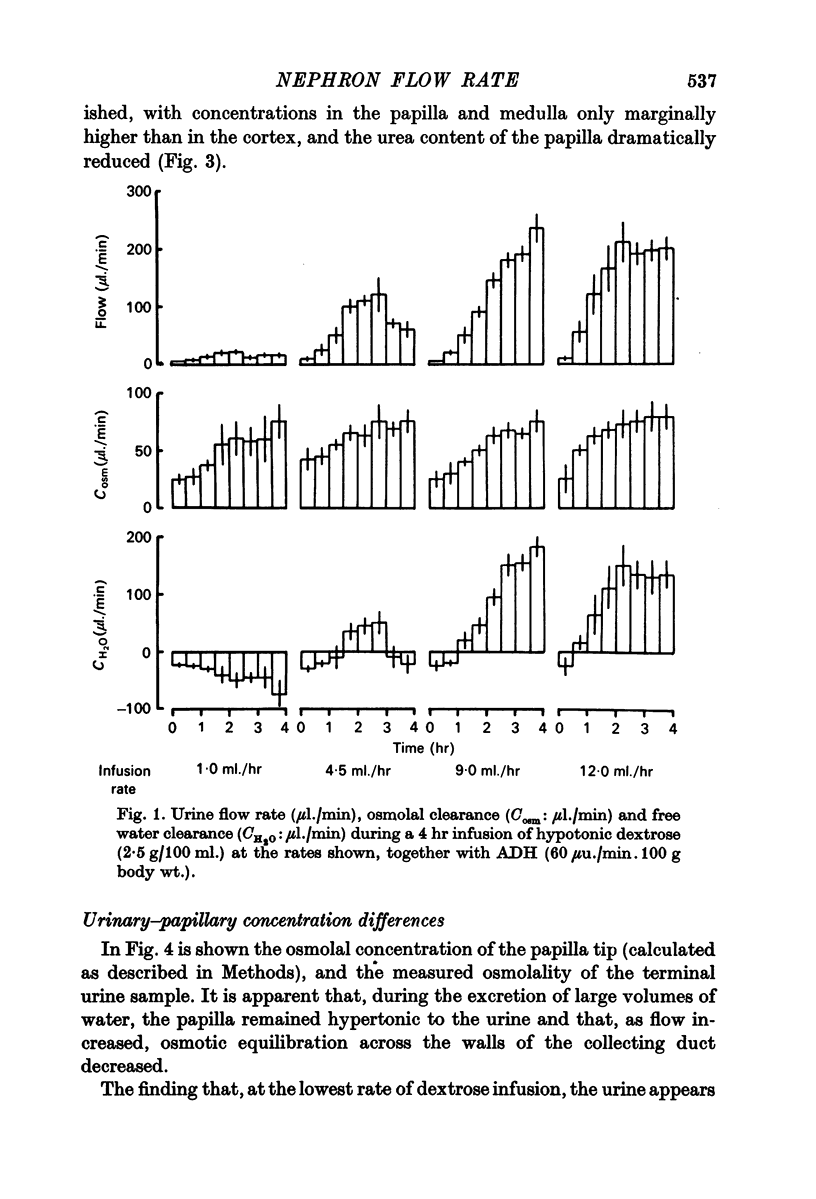
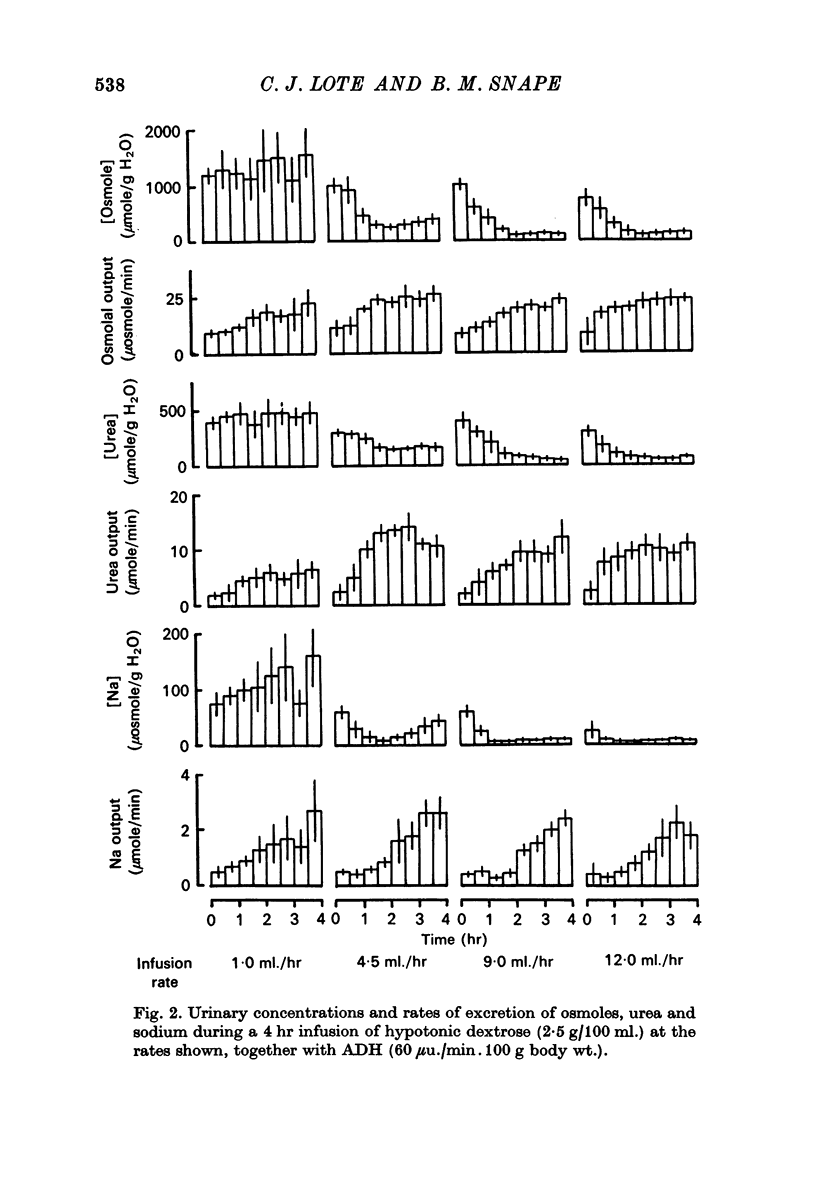

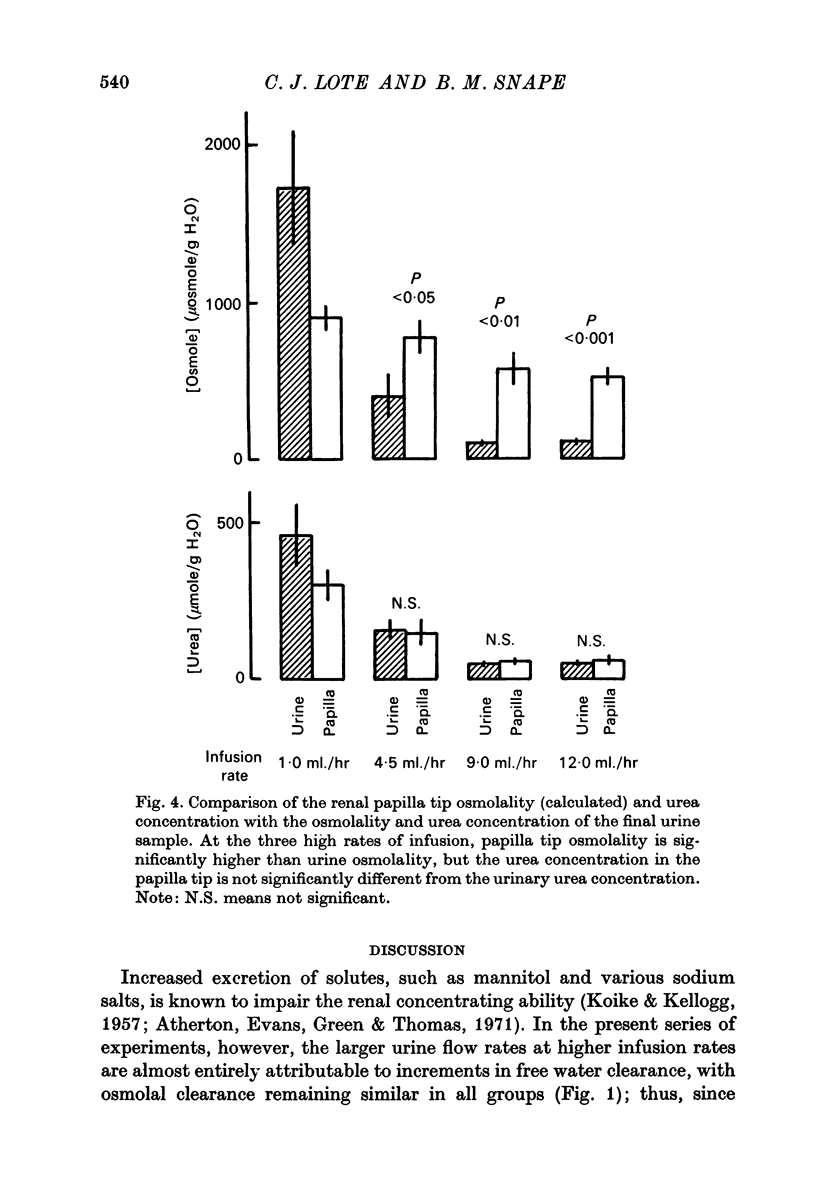
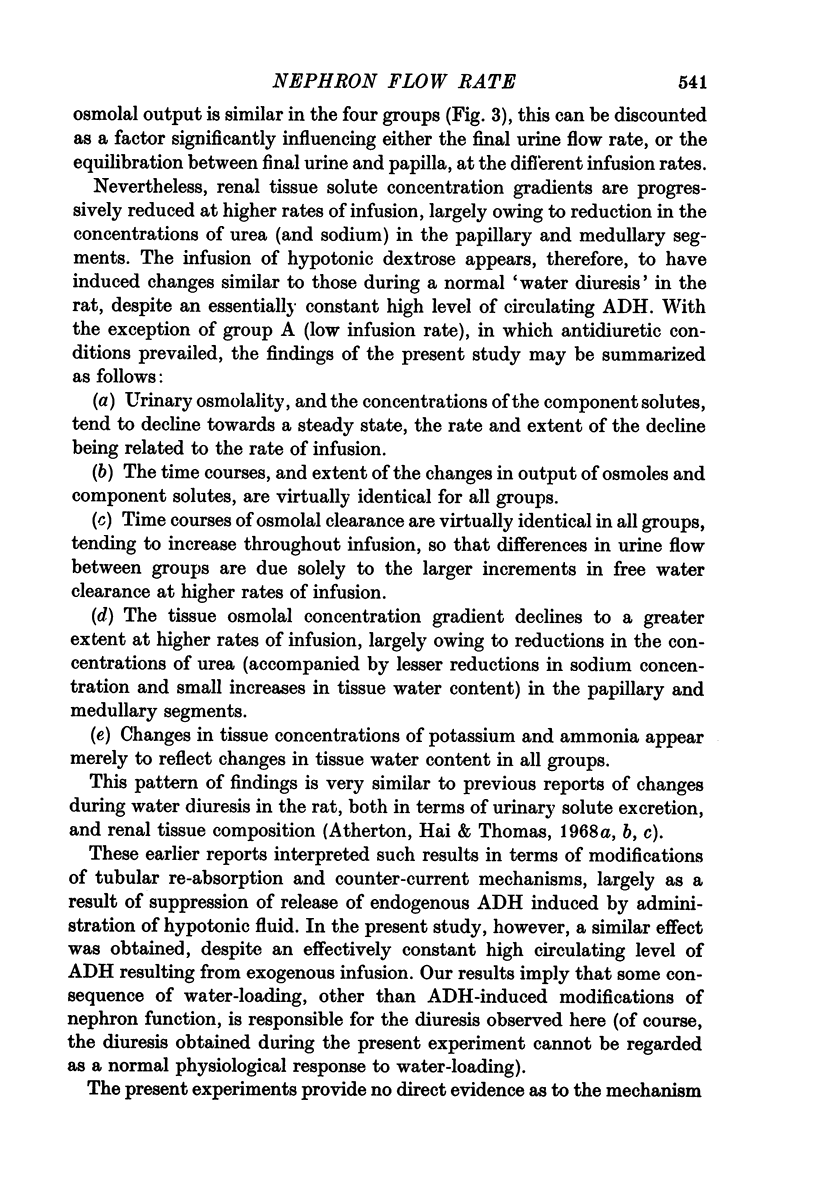
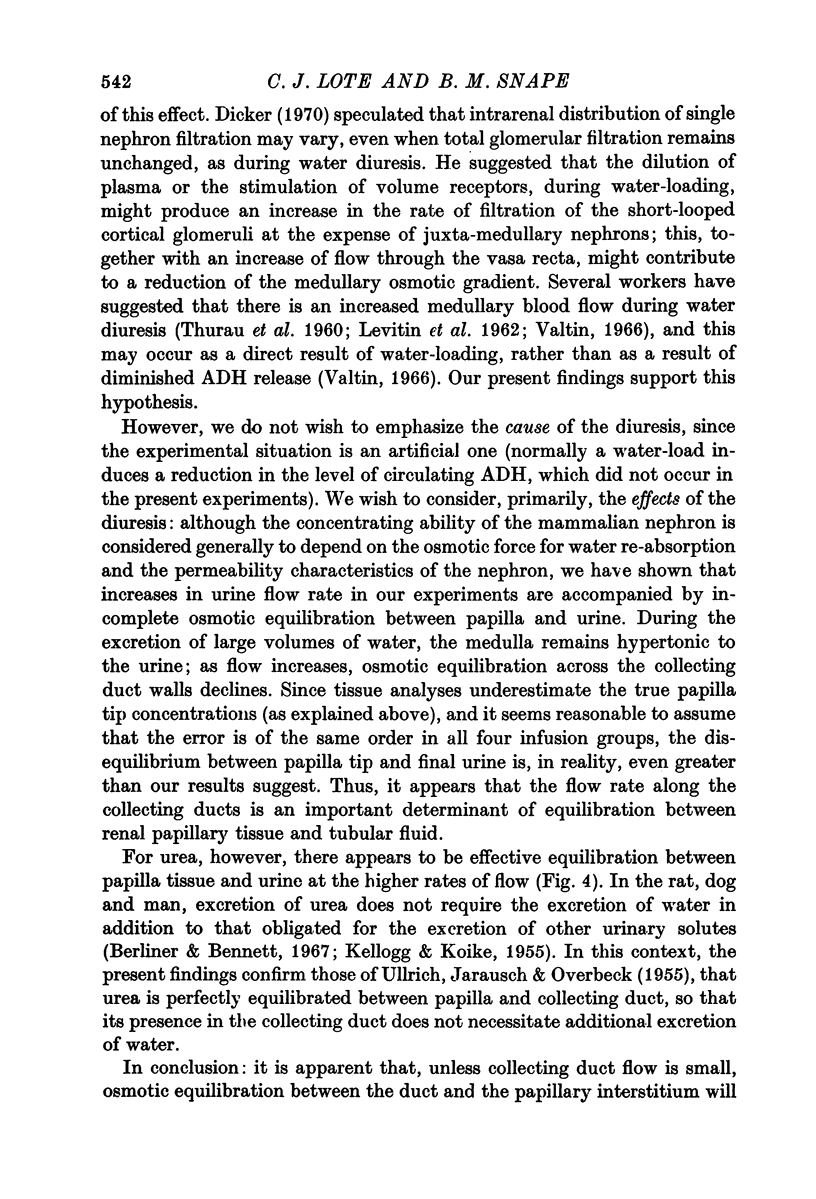

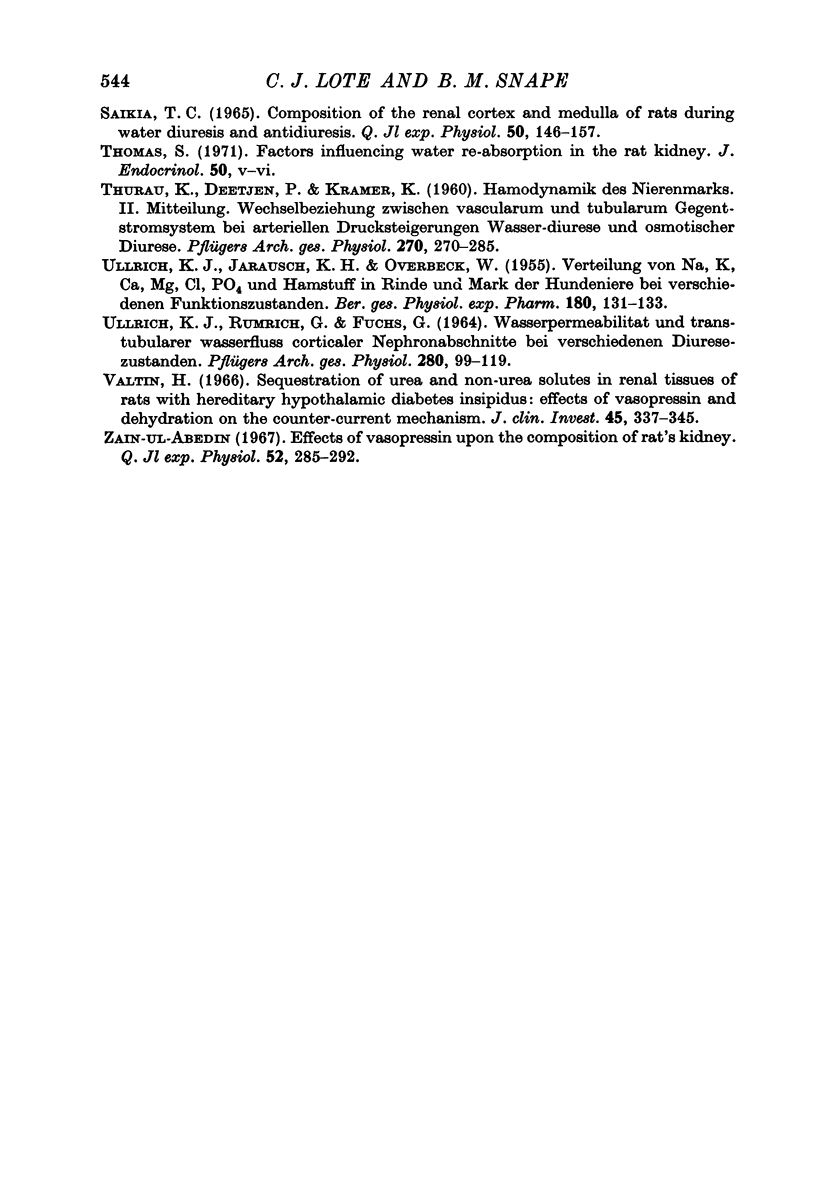
Selected References
These references are in PubMed. This may not be the complete list of references from this article.
- Atherton J. C., Evans J. A., Green R., Thomas S. Influence of variations in hydration and in solute excretion of the effects of lysine-vasopressin infusion on urinary and renal tissue composition in the conscious rat. J Physiol. 1971 Mar;213(2):311–327. doi: 10.1113/jphysiol.1971.sp009384. [DOI] [PMC free article] [PubMed] [Google Scholar]
- Atherton J. C., Green R., Hai M. A. Evaluation of a method for weighing small tissue samples: investigations into freezing and evaporation. Pflugers Arch. 1969;309(3):203–211. doi: 10.1007/BF00586798. [DOI] [PubMed] [Google Scholar]
- Atherton J. C., Green R., Thomas S. Influence of lysine-vasopressin dosage on the time course of changes in renal tissue and urinary composition in the conscious rat. J Physiol. 1971 Mar;213(2):291–309. doi: 10.1113/jphysiol.1971.sp009383. [DOI] [PMC free article] [PubMed] [Google Scholar]
- Atherton J. C., Green R., Thomas S., Wood J. A. Time course of changes in renal tissue and urinary composition after cessation of constant infusion of lysine vasopressin in the conscious, hydrated rat. J Physiol. 1972 May;222(3):583–595. doi: 10.1113/jphysiol.1972.sp009816. [DOI] [PMC free article] [PubMed] [Google Scholar]
- Atherton J. C., Hai M. A., Thomas S. Effects of water diuresis and osmotic (mannitol) diuresis on urinary solute excretion by the conscious rat. J Physiol. 1968 Jul;197(2):395–410. doi: 10.1113/jphysiol.1968.sp008566. [DOI] [PMC free article] [PubMed] [Google Scholar]
- Atherton J. C., Hai M. A., Thomas S. The time course of changes in renal tissue composition during mannitol diuresis in the rat. J Physiol. 1968 Jul;197(2):411–428. doi: 10.1113/jphysiol.1968.sp008567. [DOI] [PMC free article] [PubMed] [Google Scholar]
- Atherton J. C., Hai M. A., Thomas S. The time course of changes in renal tissue composition duruig water diuresis in the rat. J Physiol. 1968 Jul;197(2):429–443. doi: 10.1113/jphysiol.1968.sp008568. [DOI] [PMC free article] [PubMed] [Google Scholar]
- Berliner R. W., Bennett C. M. Concentration of urine in the mammalian kidney. Am J Med. 1967 May;42(5):777–789. doi: 10.1016/0002-9343(67)90095-2. [DOI] [PubMed] [Google Scholar]
- FAWCETT J. K., SCOTT J. E. A rapid and precise method for the determination of urea. J Clin Pathol. 1960 Mar;13:156–159. doi: 10.1136/jcp.13.2.156. [DOI] [PMC free article] [PubMed] [Google Scholar]
- Gardner K. D., Jr Dry weight as a point of reference in studies of renal papillary composition. Am J Physiol. 1966 Oct;211(4):1031–1035. doi: 10.1152/ajplegacy.1966.211.4.1031. [DOI] [PubMed] [Google Scholar]
- Hai M. A., Thomas S. The time-course of changes in renal tissue composition during lysine vasopressin infusion in the rat. Pflugers Arch. 1969;310(4):297–317. doi: 10.1007/BF00587241. [DOI] [PubMed] [Google Scholar]
- KOIKE T. I., KELLOGG R. H. Osmotic diuresis in the unanesthetized hydropenic rat. Am J Physiol. 1957 Oct;191(1):45–49. doi: 10.1152/ajplegacy.1957.191.1.45. [DOI] [PubMed] [Google Scholar]
- LEVITIN H., GOODMAN A., PIGEON G., EPSTEIN F. H. Composition of the renal medulla during water diuresis. J Clin Invest. 1962 May;41:1145–1151. doi: 10.1172/JCI104567. [DOI] [PMC free article] [PubMed] [Google Scholar]
- Morgan T., Sakai F., Berliner R. W. In vitro permeability of medullary collecting ducts to water and urea. Am J Physiol. 1968 Mar;214(3):574–581. doi: 10.1152/ajplegacy.1968.214.3.574. [DOI] [PubMed] [Google Scholar]
- SAIKIA T. C. COMPOSITION OF THE RENAL CORTEX AND MEDULLA OF RATS DURING WATER DIURESIS AND ANTIDIURESIS. Q J Exp Physiol Cogn Med Sci. 1965 Apr;50:146–157. doi: 10.1113/expphysiol.1965.sp001777. [DOI] [PubMed] [Google Scholar]
- THURAU K., DEETJEN P., KRAMER K. [Hemodynamics of kidney medullary substance. Part II. Interrelationships between the vascular and tubular counter-flow system in arterial pressure increases, water diuresis and osmotic diuresis]. Pflugers Arch Gesamte Physiol Menschen Tiere. 1960;270:270–285. [PubMed] [Google Scholar]
- Thomas S. Factors influencing water reabsorption in the rat kidney. J Endocrinol. 1971 Jul;50(3):v–vi. [PubMed] [Google Scholar]
- ULLRICH K. J., RUMRICH G., FUCHS G. WASSERPERMEABILITAET UND TRANDTUBULAERER WASSERFLUSS CORTICALER NEPHRONABSCHNITTE BEI VERSCHIEDENEN DIURESEZUSTAENDEN. Pflugers Arch Gesamte Physiol Menschen Tiere. 1964 Jul 1;280:99–119. [PubMed] [Google Scholar]
- Valtin H. Sequestration of urea and nonurea solutes in renal tissues of rats with hereditary hypothalamic diabetes insipidus: effect of vasopressin and dehydration on the countercurrent mechanism. J Clin Invest. 1966 Mar;45(3):337–345. doi: 10.1172/JCI105348. [DOI] [PMC free article] [PubMed] [Google Scholar]
- Zain-ul-Abedin Effects of vasopressin upon the composition of rat's kidney. Q J Exp Physiol Cogn Med Sci. 1967 Jul;52(3):285–292. doi: 10.1113/expphysiol.1967.sp001914. [DOI] [PubMed] [Google Scholar]


